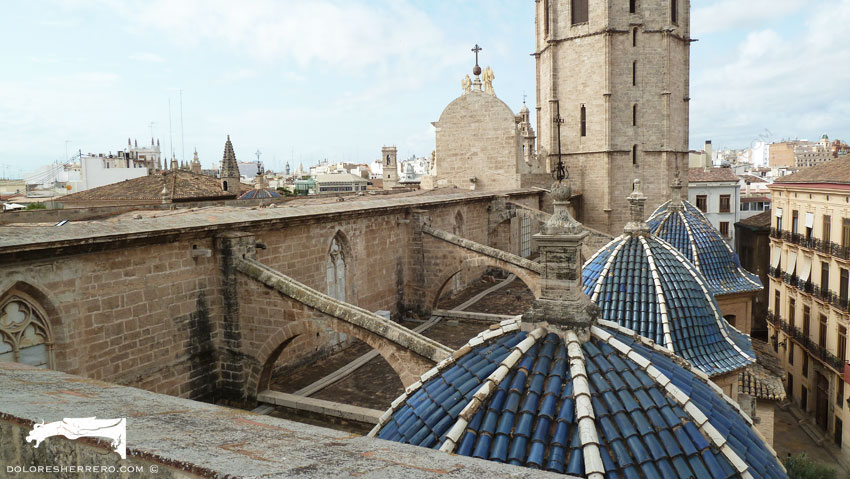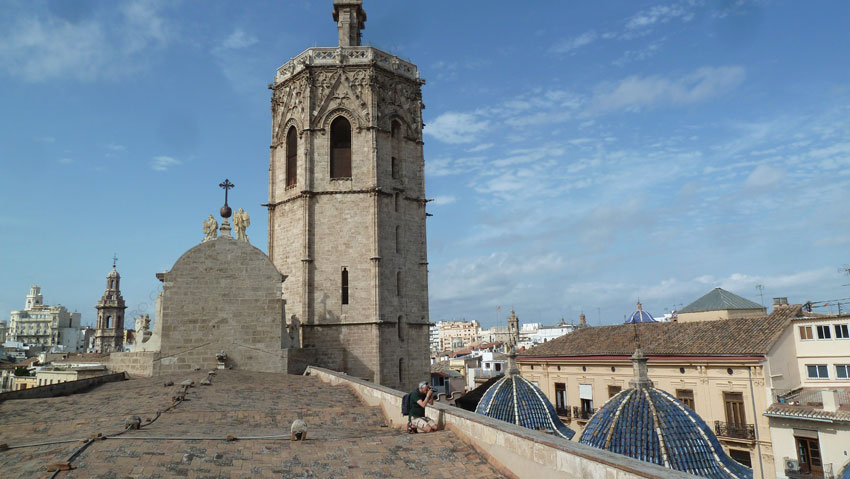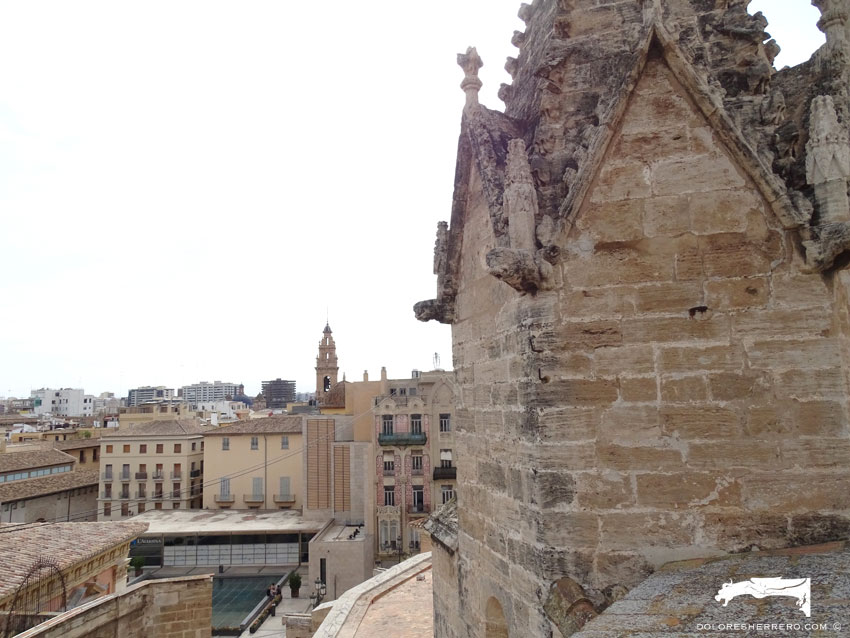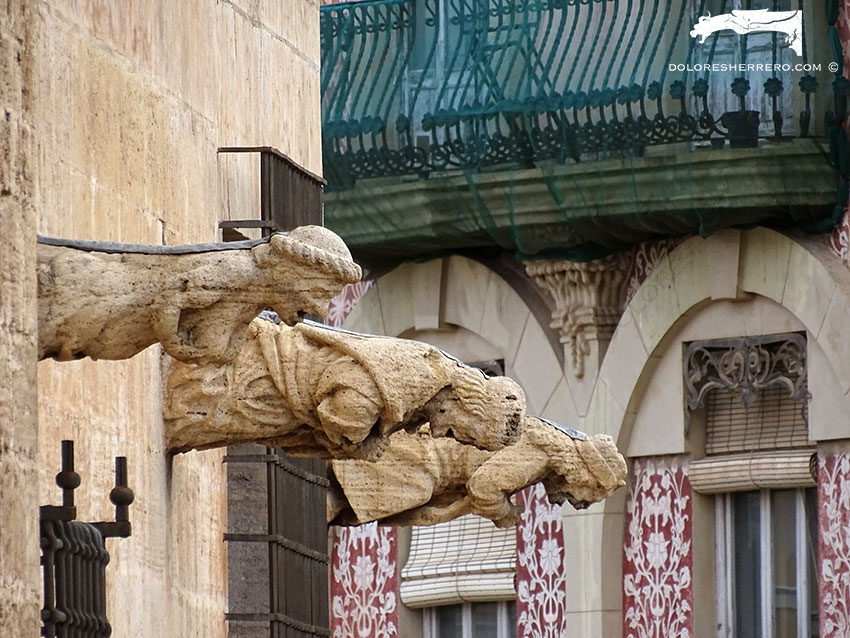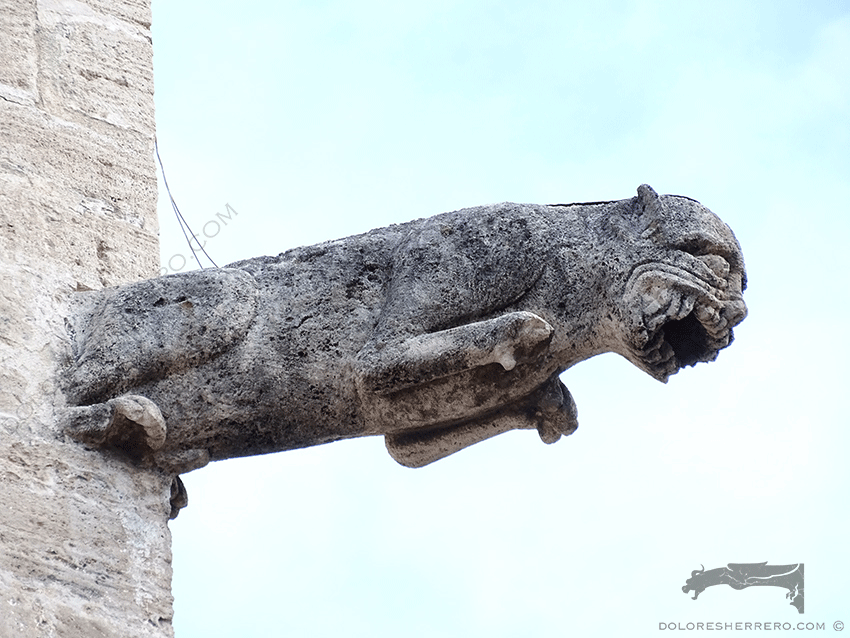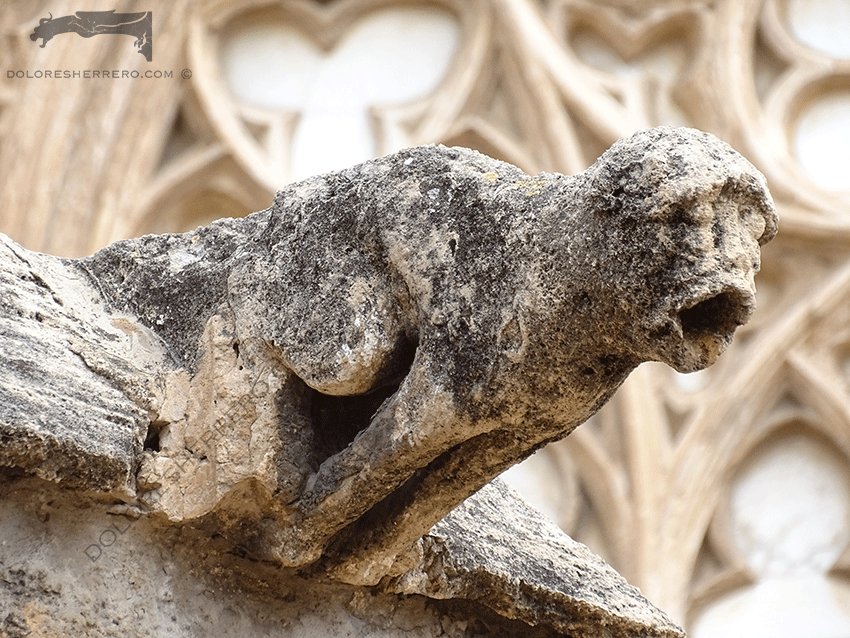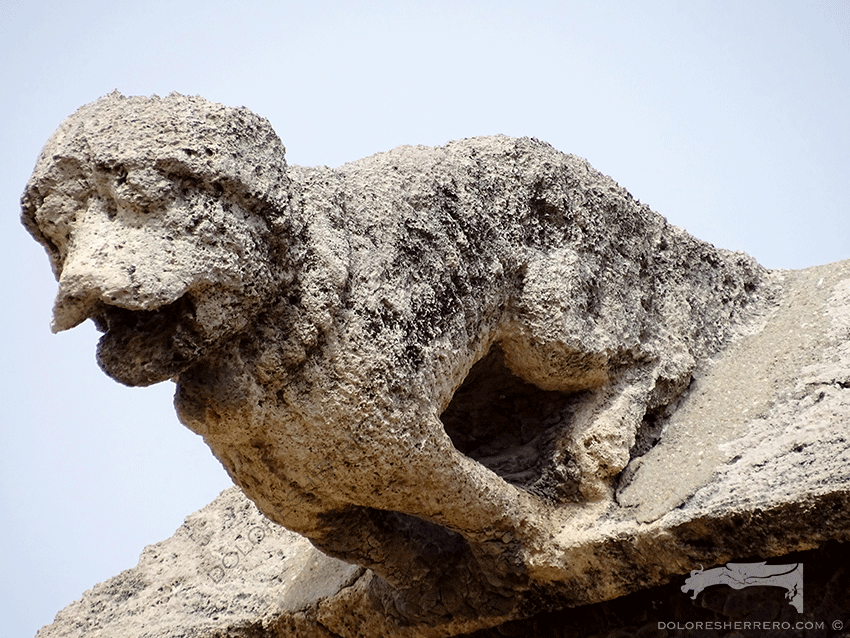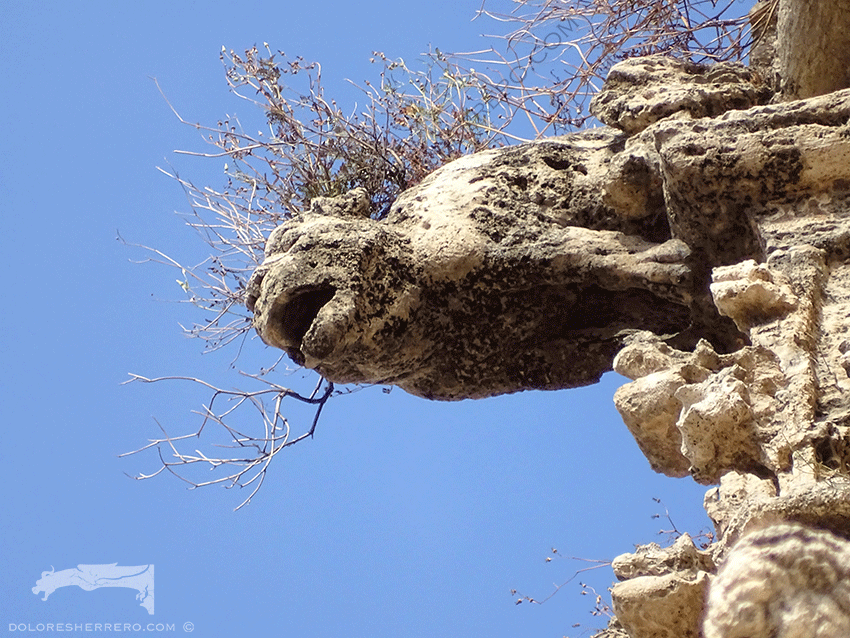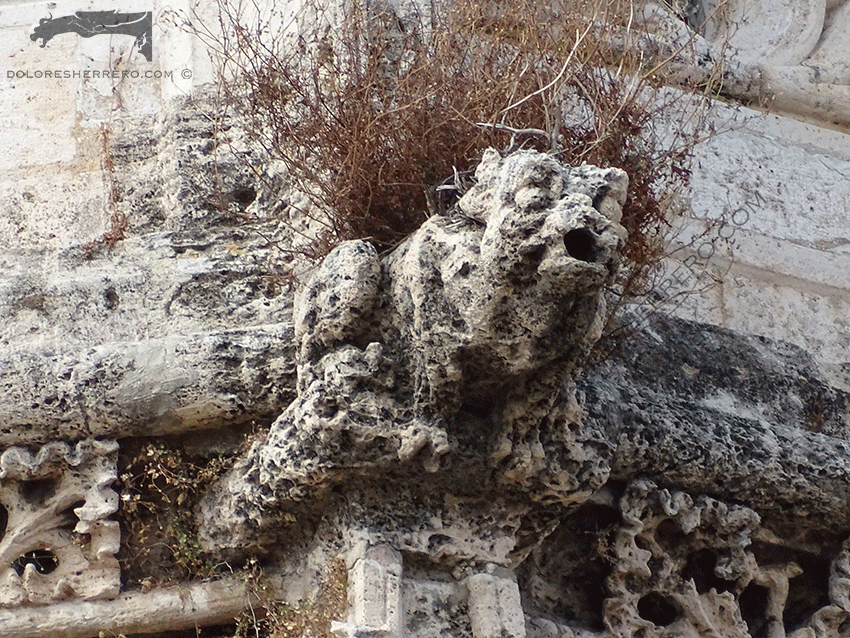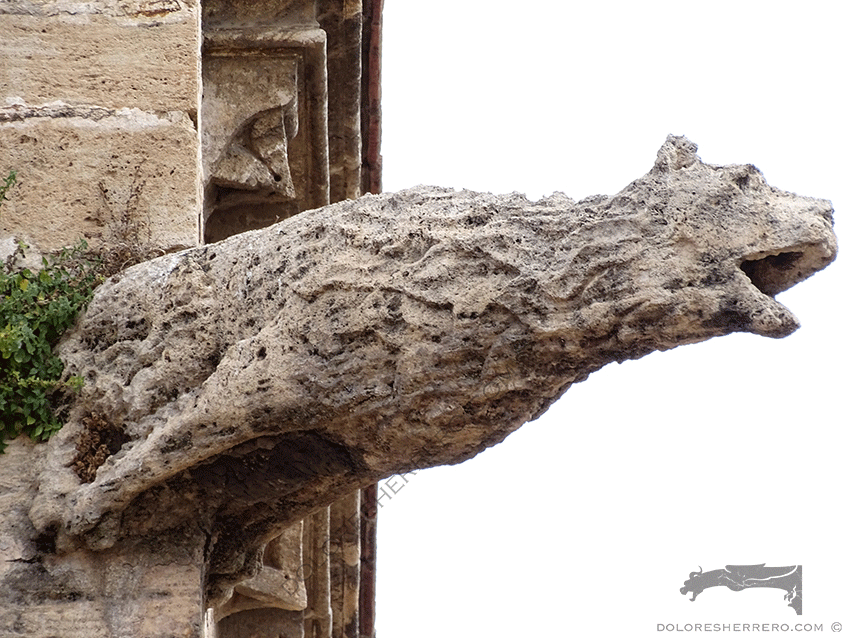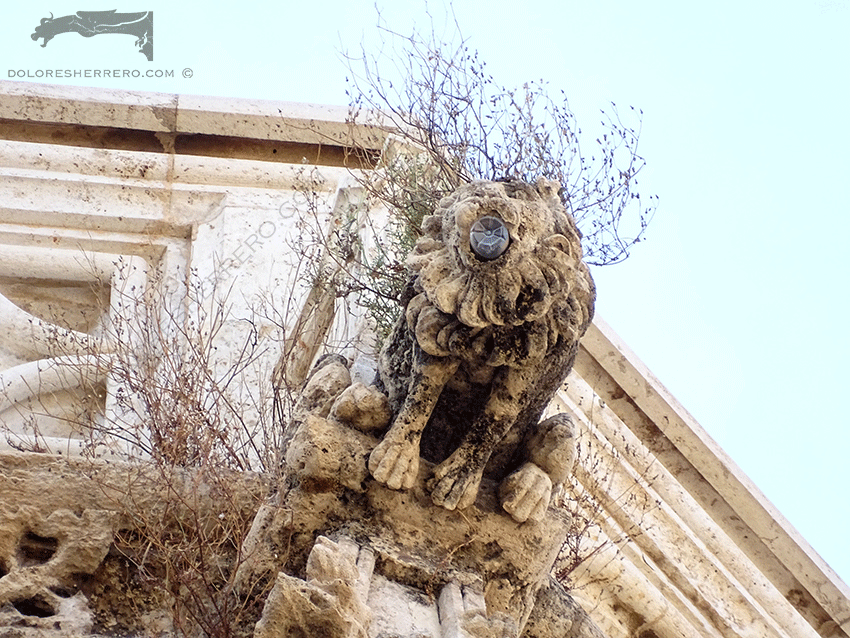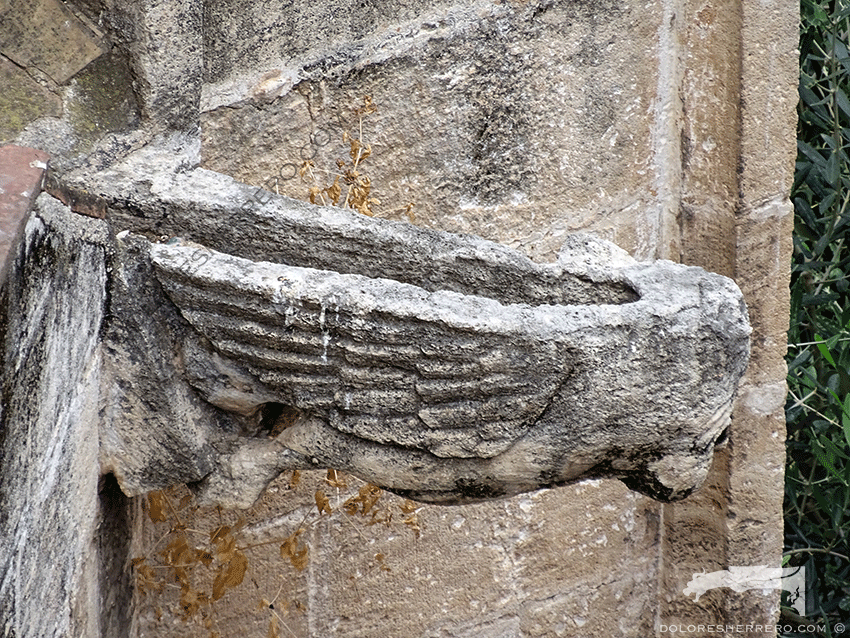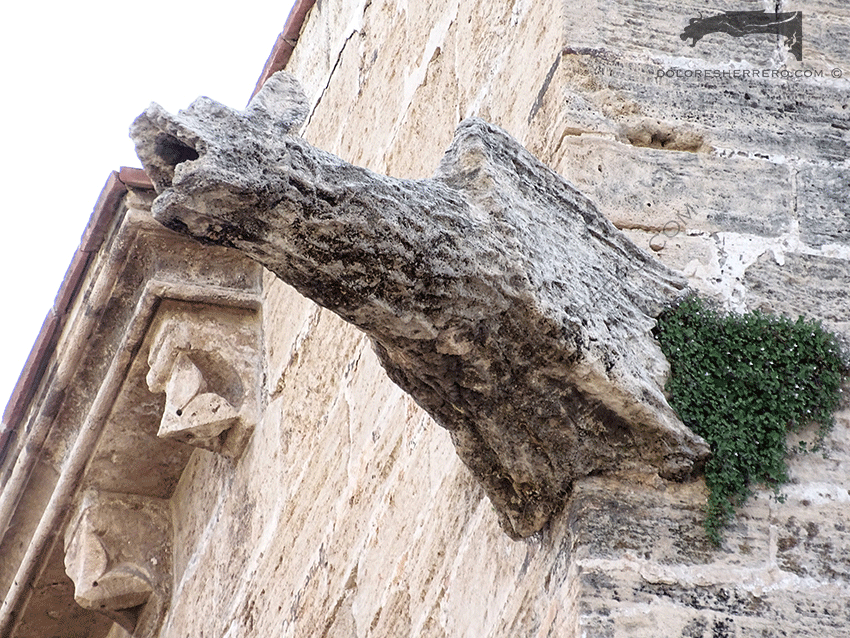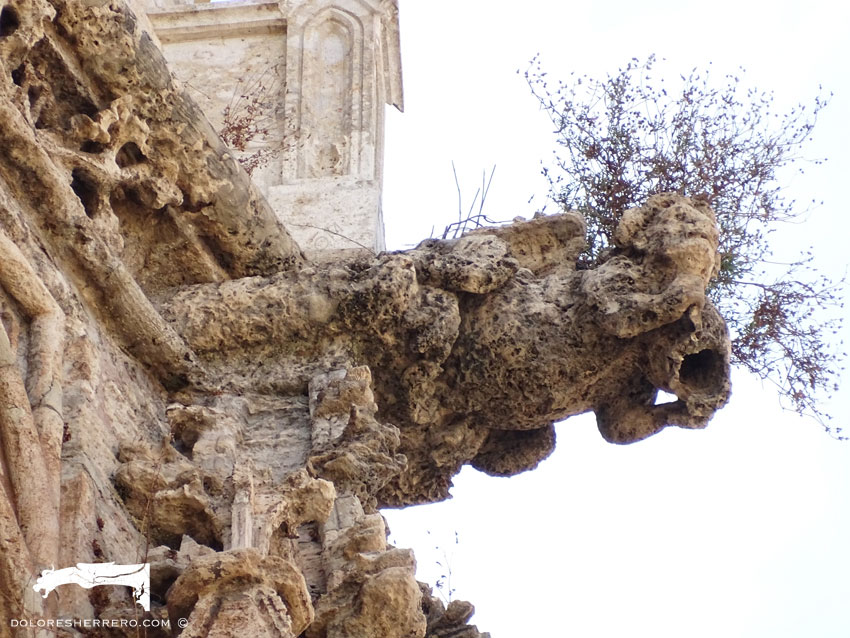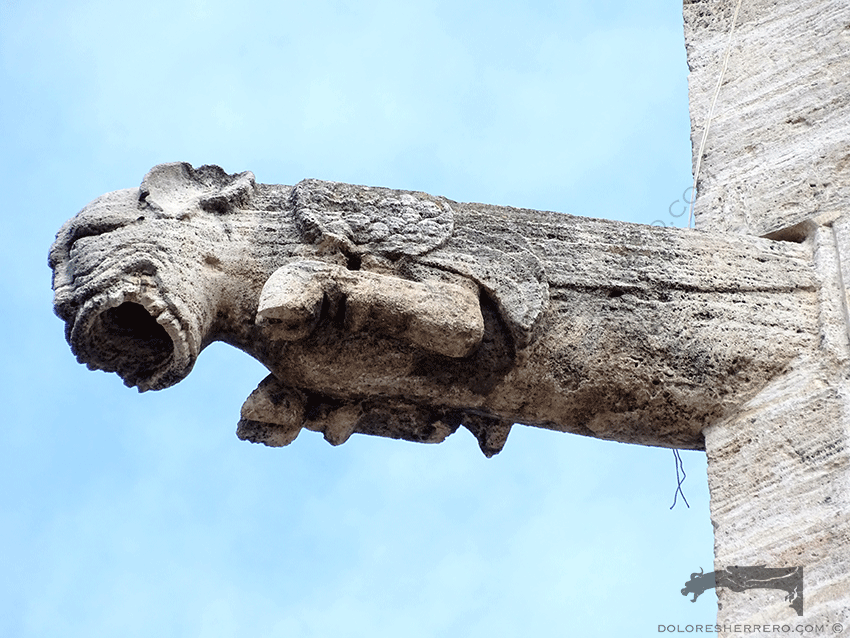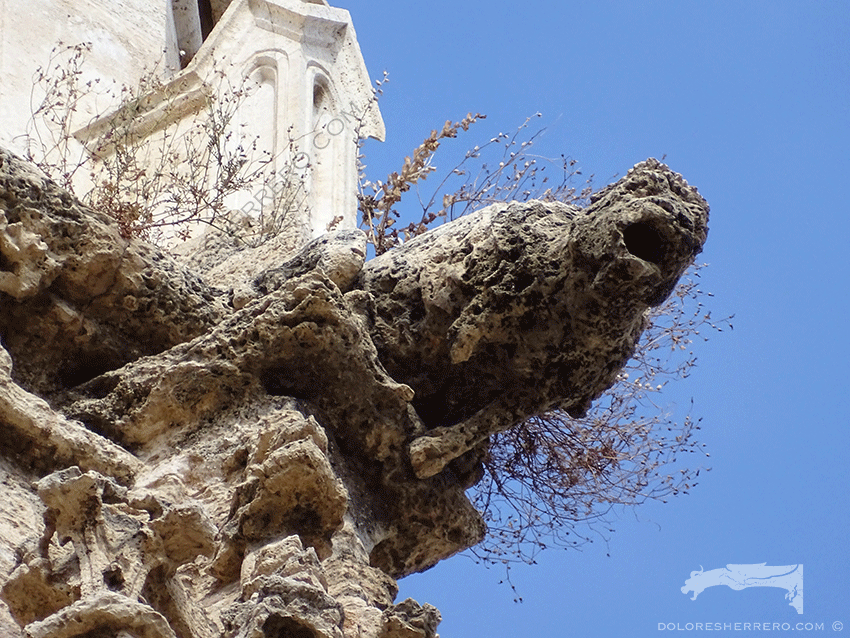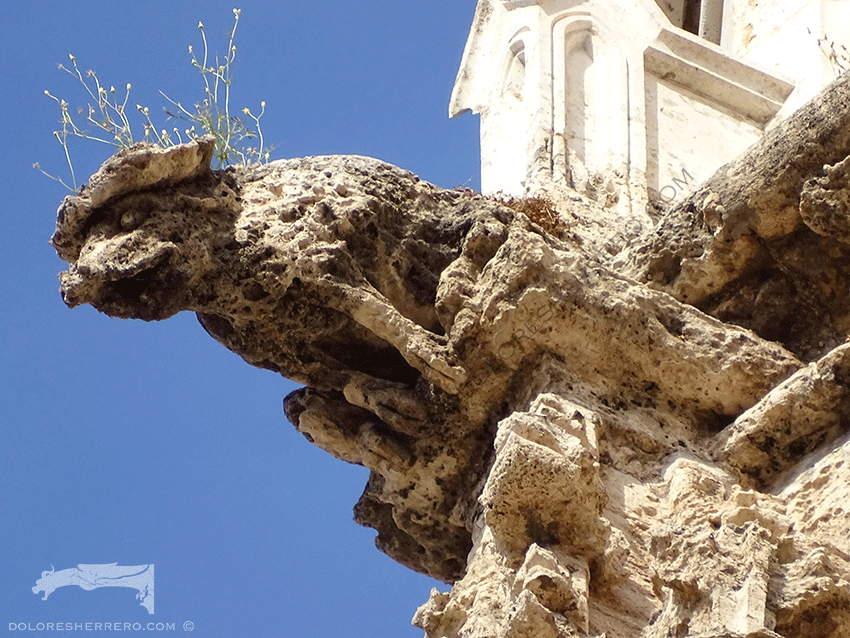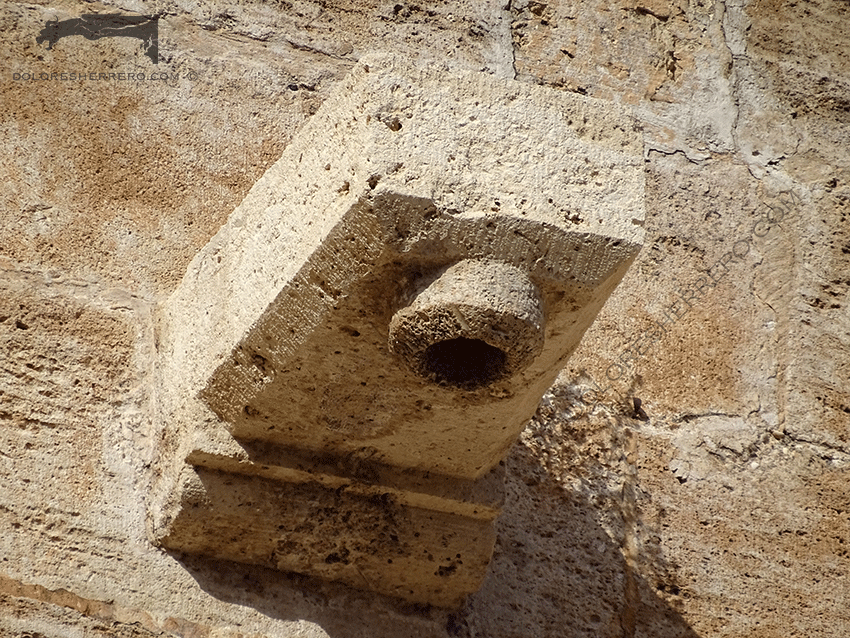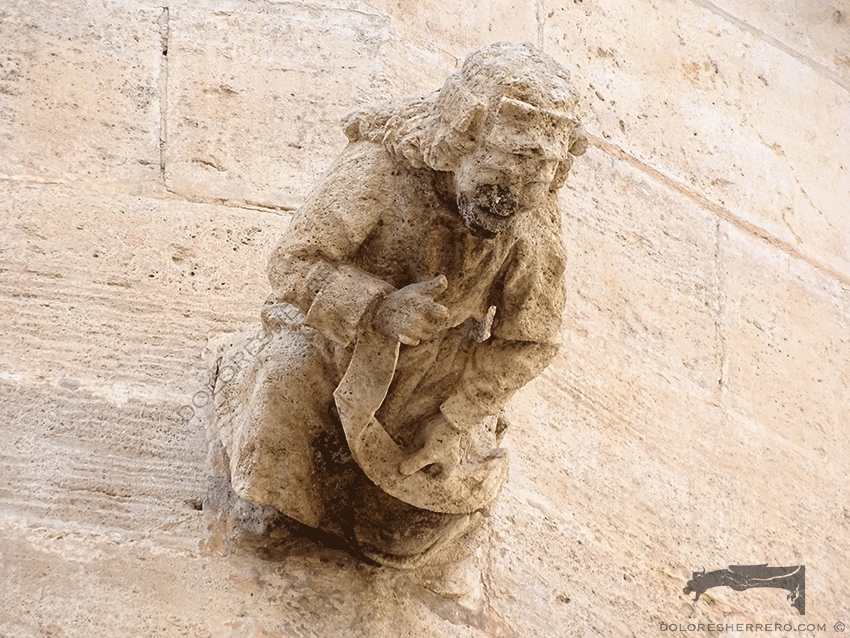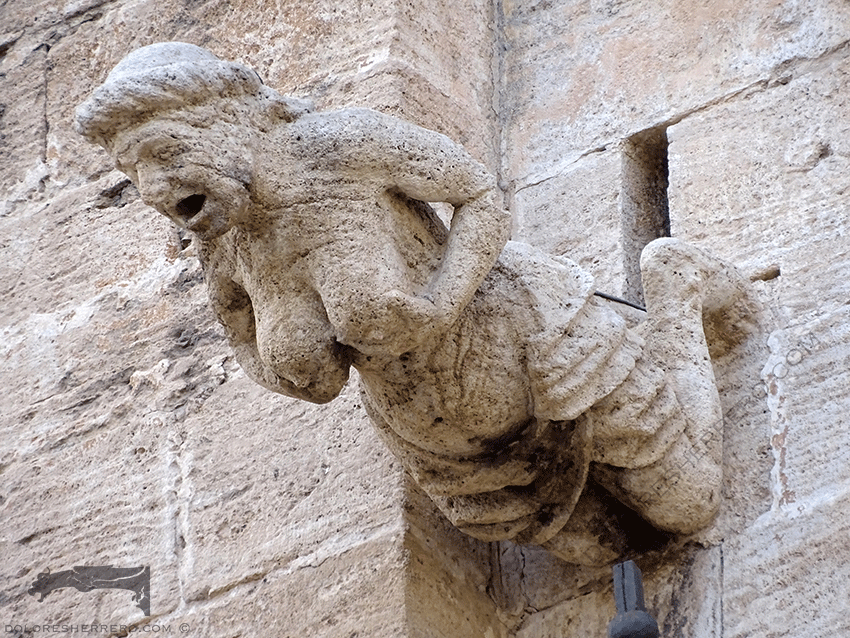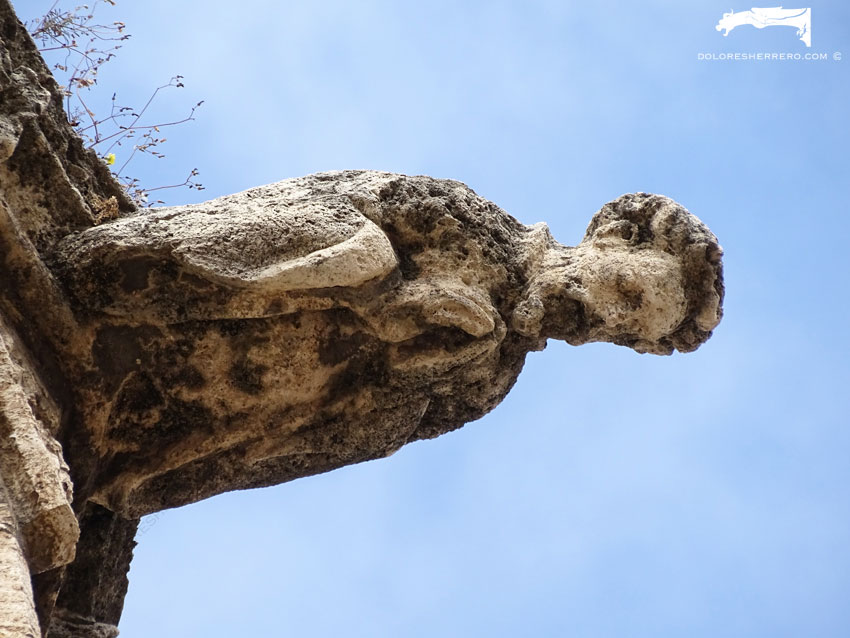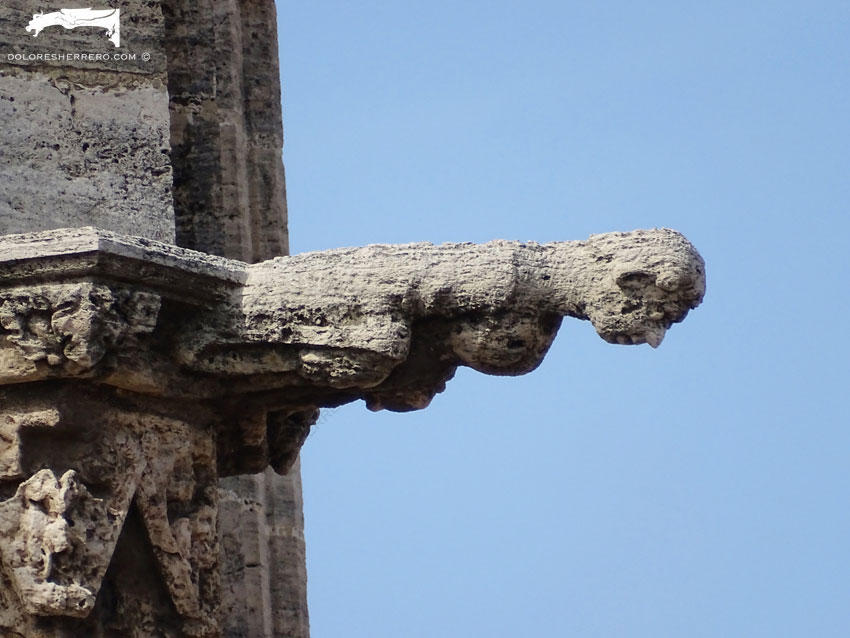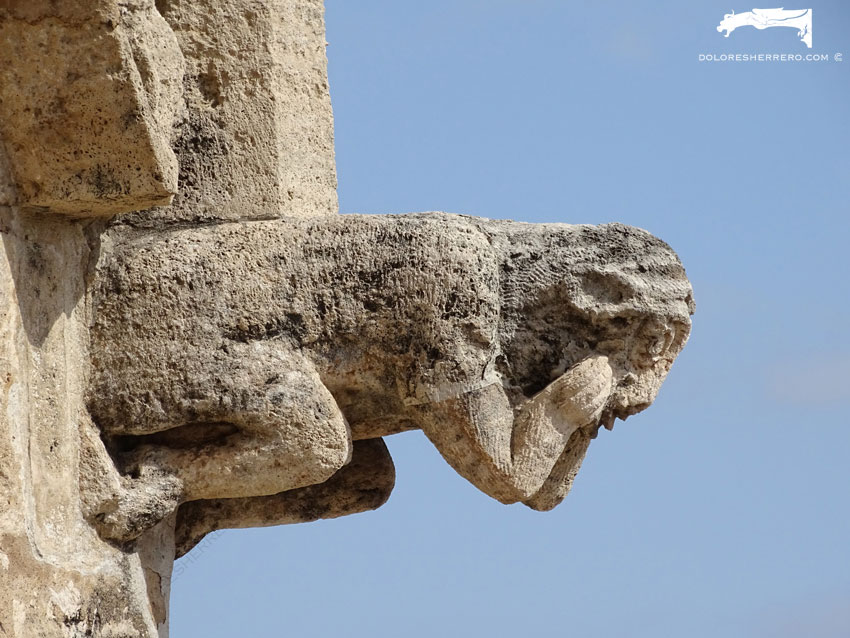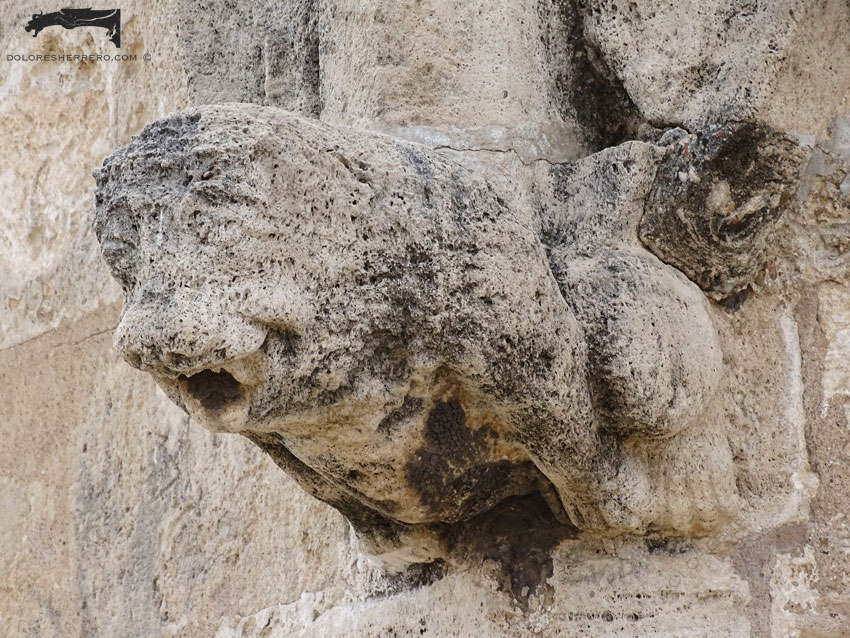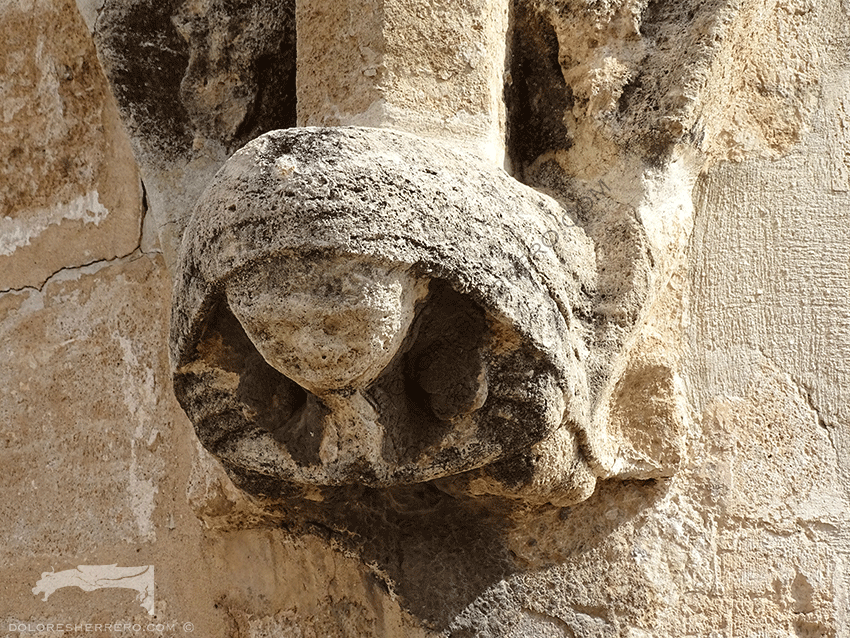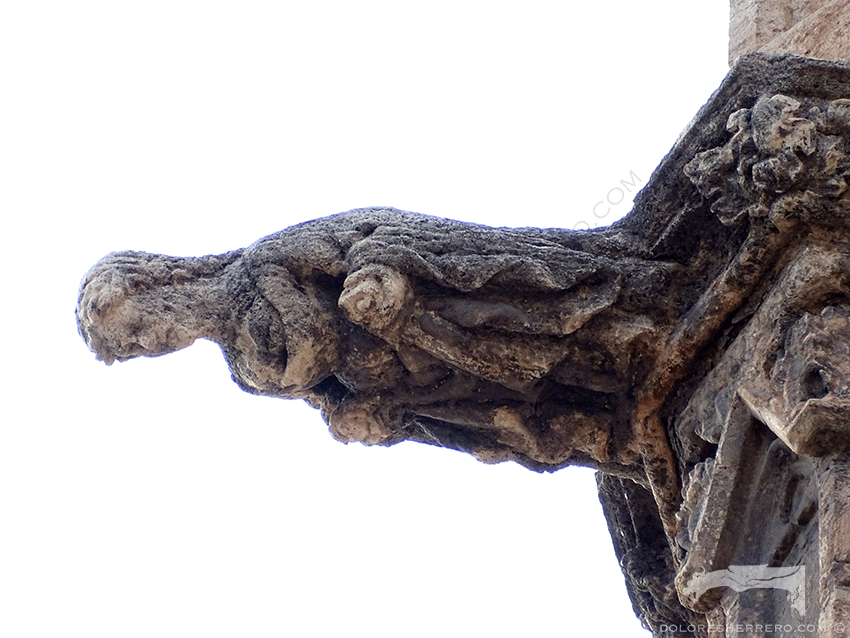In this first post on gargoyles in the Region of Valencia (Spain), we shall be visiting the city of Valencia itself, which is home to some truly amazing examples. Today, We invite you to admire the gargoyles in this beautiful city’s cathedral.
The bishop of Valencia, Albalat, laid the first stone of this magnificent cathedral in 1262. Although it is Gothic, it also includes structures and elements in Romanesque, Renaissance, Baroque and Neoclassical styles. Among its greatest architectural wonders are the façade, the work of Konrad Rudolf (18th century) and the Micalet (Miguelete) tower, a superb octagonal structure dating to the late 14th century and the work of master mason Andreu Juliá.
In an article on the Cathedral of Valencia gargoyles, Marta Almela states that some of the gargoyles here were sculpted in the 15th century, during construction of the cathedral archives. Various documents in the archives mention the production of gargoyles in 1495 by the sculptor Johan Casel, during works on the Arcada Nova directed by the architect Pere Compte.
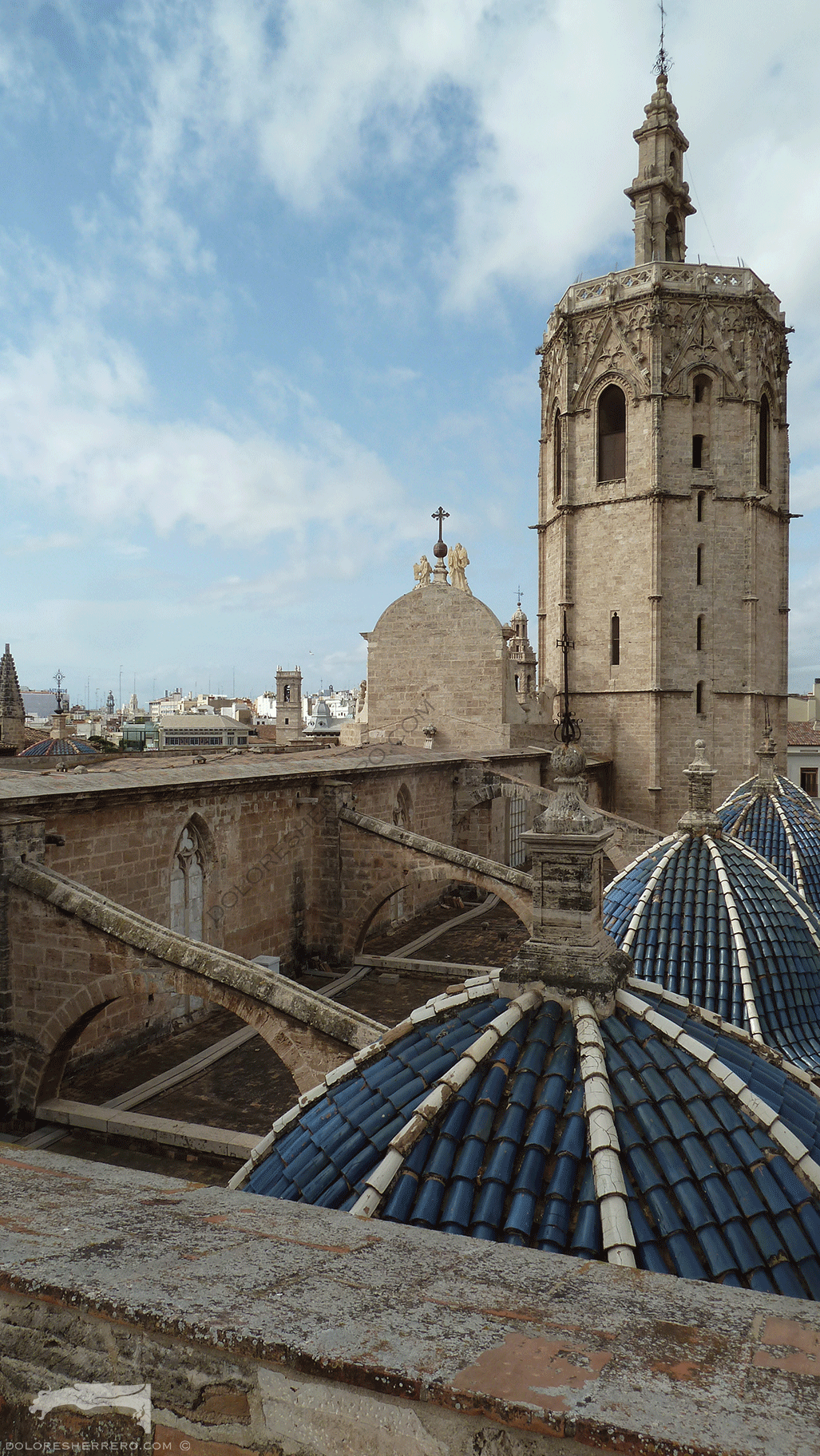
The Gargoyles
Beginning with depictions of real animals, there are several dogs worked in very different forms, each with a very individual sculptural style. We have already discussed the symbolism of the dog in a previous post, and it is one of the most commonly represented animals in gargoyles. The dog has been a symbol of loyalty and security, the protector of the house and its inhabitants. It exists since antiquity: think of Cerberus who stood guard over Hades. The dog also guards its flock, protecting it from wolves, just as the priest guards and protects his parishioners from the devil. On the negative side, some mediaeval texts depict the dog as a symbol of vices and sins such as envy, and in the Tales of Count Lucanor (14th century), it is portrayed as the personification of hypocrites, sycophants and ingrates.
The first dog is in the rampant position, and has small pupils in its oval eyes, a large mouth with folds forming what we call the “triple lip” and large teeth and fangs; this type of head recalls some of the gargoyles in the cathedrals of Burgos and Gerona and at the Monastery of Batalha in Portugal. Although the head presents a demonic or monstrous appearance, the body resembles that of a dog.
There are also two early Gothic figures that although worn by age remain very interesting; one wears a collar decorated with balls and there is also a large central one. Other dogs have rounded bodies, and some of them are quite realistic.
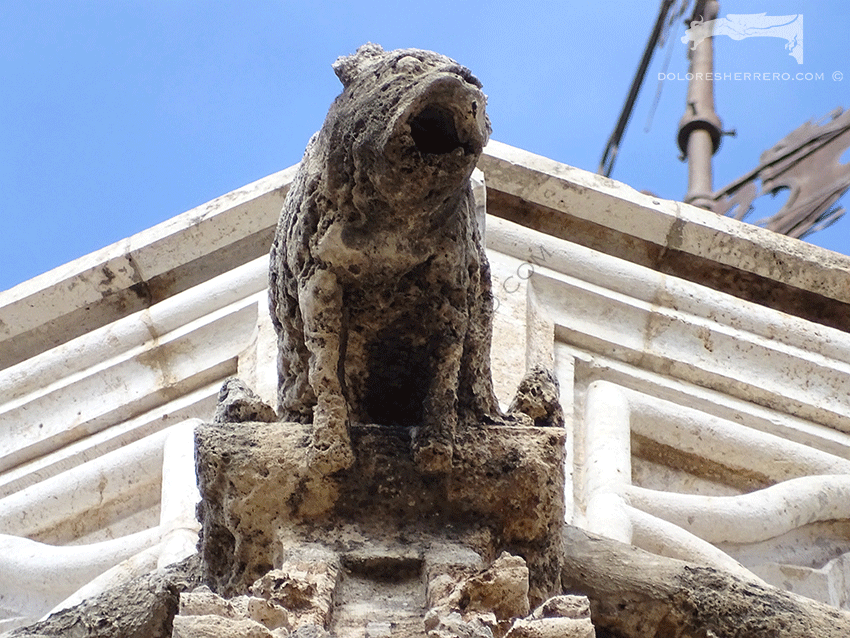
There are two other magnificent quadrupeds. The first, again worn with age, probably depicts a lion because of its long mane, while the second is definitely a lion with a voluminous mane. The lion is the most commonly represented animal in gargoyles. It is the king of the beasts, adopted by Christian iconography as the Lion of the Tribe of Judah, a symbol of Christ. It is said that a lion never closes its eyes, even when sleeping, and it is therefore also the symbol of vigilance, which is why it appears on many buildings. In other, less common cases, it has a negative meaning, being a symbol of pride or of the antichrist.
Another gargoyle has a bird’s body; however, due to its location and the position of its head cocked to one side, we were unable to see its face and so cannot be sure of its type. A winged dog represents an animal monster, and despite its worn stone, it is still clearly a magnificent figure.
The devils are breathtaking. The first is a doccione carrying a vessel, an anthropomorph devil with wings, a tail and quadruped legs. Recall that the doccioni are figures —generally human— bearing a vessel or an animal on their shoulders, from the mouth of which spurts the water.
The second is a winged devil with a ferocious appearance. It is rampant and has hooves, long ears, a triple lip and a large mouth with teeth; the head is similar to that of the first dog described above.
A final two gargoyles are so badly worn that it is impossible to clearly distinguish their type. They may be devils, since they present some of the typically associated elements such as hooves and a beard.
Although not usually as attractive or beautiful as gargoyles depicting humans or creatures of all kinds, geometric gargoyles are also worthy of our notice.
The Cathedral of Valencia also has various geometric gargoyles. Of these, three are particularly noteworthy: one is semicircular with moulding at the opening, a design similar to that of some gargoyles in other Spanish cathedrals, for example Zamora. Another is rectangular with a circular opening below and a corbel, while the third is rectangular with a polygonal opening.
Also of note is a gargoyle whose type is unrecognisable due to decay, but which is highly interesting because of its location: it sits on the side of a flying buttress, evidencing its function as a drainage spout.
We have left the impressive human gargoyles for the end. There are four of these, all showing stunning sculpting and iconography.
The first depicts a man holding a long cloak falling in folds from which emerge a knee, arms and bare feet. He has long hair and a large beard that he appears to be pulling. Unfortunately, the face has disintegrated, but the figure is magnificent. The second is a man wearing long robes and a cap or hood. He has long hair and is holding a phylactery in his hands. As with the previous figure, one of his knees is resting on the ground. The third is similar, albeit with short hair, and is wearing a cap, long robes and in this case also a short cape. He is kneeling and seems to be holding a phylactery. Their clothing, position and phylacteries suggest that these three figures represent clerics.
The last figure is both exceptional and suggestive. It depicts a semi-naked woman, with only the lower part of her body covered by fabric or cloth, who is kneeling and touching her breasts, recalling the gargoyle of a half-naked woman pulling at her nipples at the Monastery of Batalha. She is wearing a twisted turban and her expression is eloquent. This gargoyle may refer to lust.
We couldn’t finish this post without mentioning the grotesque figures or chimeras scattered around the cathedral and decorating its exterior.
In addition to the main types generally depicted in gargoyles, such as animals, devils and monsters —all images taken from mediaeval symbolism and tradition, especially from the bestiaries— the Cathedral of Valencia is notable for its doccioni, unusual figures that we also saw in the Cathedral of Palma de Mallorca, as well, naturally, as its four human figures, the three clerics and the woman representing lust, which reflect the dichotomy between the good and sacred and the evil and profane. These images depict sin and the struggle between good and evil, a struggle which also is reflected in the other gargoyles, not only through the figures of devils and monsters, but also through the positive and negative meanings of the animals portrayed.
In this, our first post on the Region of Valencia, we aim to showcase the magnificent gargoyles of the Cathedral of Valencia. Although few in number, these are sensationally beautiful figures, both in form and type. Their sculpting is extraordinary and the themes they depict are highly interesting. If you ever visit this beautiful city, make sure to go and see them. There they are, “watching” the passers-by, a little bit of Valencian art and history and one of the jewels of the heritage of this region and of Spain.
Bibliography consulted
ALMELA, M., “Dantescas gárgolas. Los desagües medievales de la catedral”, Revista Catedral de Valencia, nº 9 (2012), pp. 9-16.
LINK, L., El Diablo. Una máscara sin rostro, Madrid, Editorial Síntesis, S. A., 2002.
MATEO GÓMEZ, I., Temas profanos en la escultura gótica española. Las sillerías de coro, Madrid, Consejo Superior de Investigaciones Científicas. Instituto Diego Velázquez, 1979.
REBOLD BENTON, J., Holy Terrors. Gargoyles on medieval buildings, New York, Abbeville Press, 1997.
SARTHOU CARRERES, C. y NAVASCUÉS PALACIO, P., Catedrales de España, Madrid, Espasa Calpe, S. A., 1998.

Doctor of Art History and researcher specializing in the study of gargoyles.
I am Dolores Herrero Ferrio, and my thesis, “An Approach to the Study of Gargoyles of Gothic Cathedrals in Castilla and León”, is dedicated to the study of these fascinating figures.
If you like gargoyles and art history, you will also enjoy my book, “The Gargoyle and Its Iconography,” a book I have written with great care for those interested in the world of gargoyles.
I have created my own Encyclopedia of Gargoyles, a Gargopedia to share with you, where you will discover all the secrets and wonders of these enigmatic sculptures.
I hope you enjoy this Gargopedia as much as I have enjoyed creating it, and remember that each gargoyle has a story to tell, and here you will discover them all.

